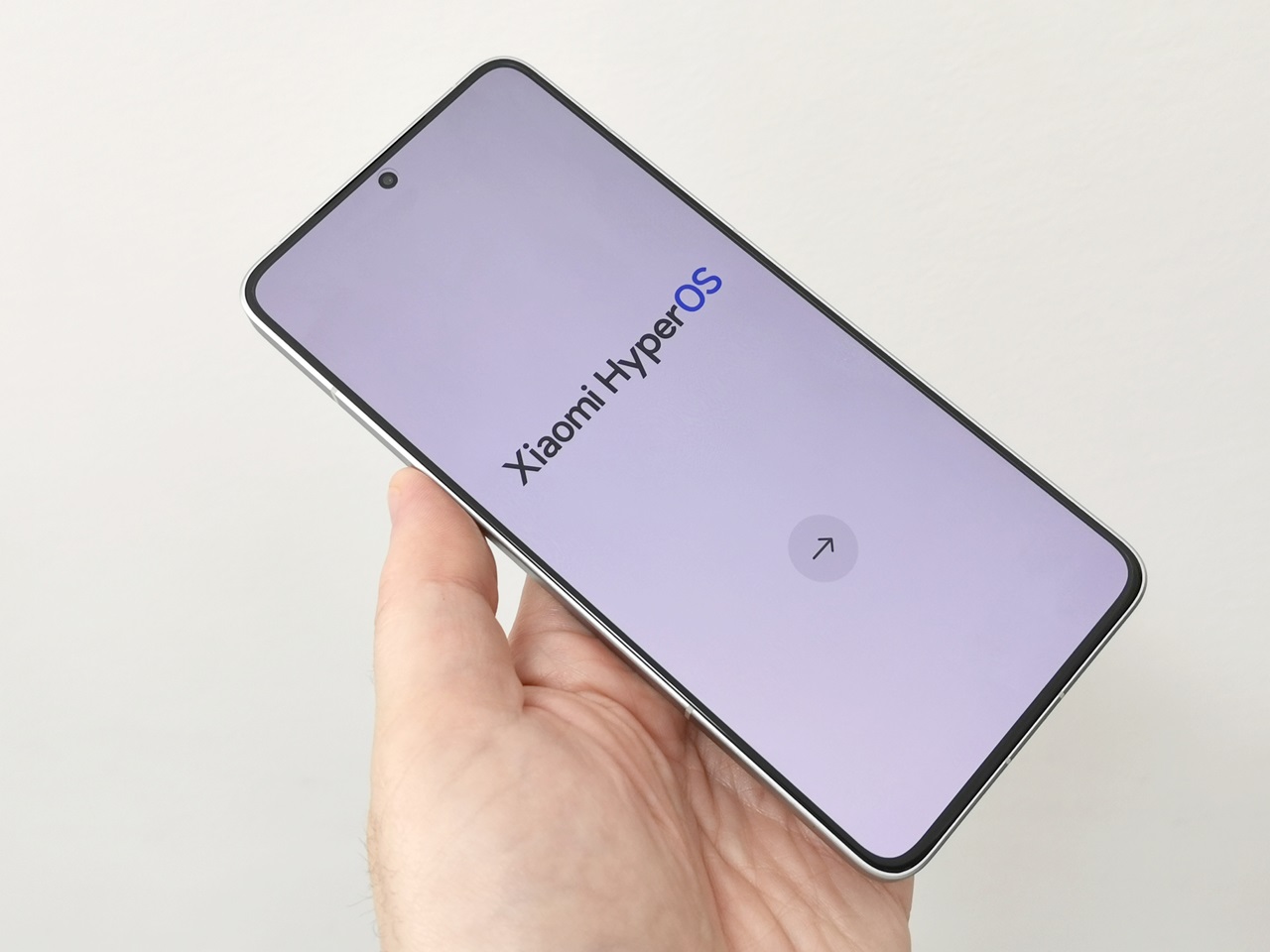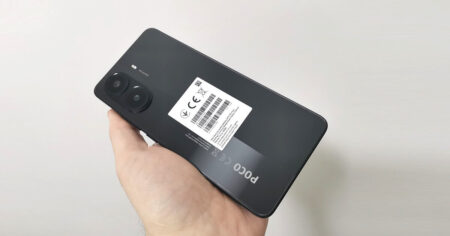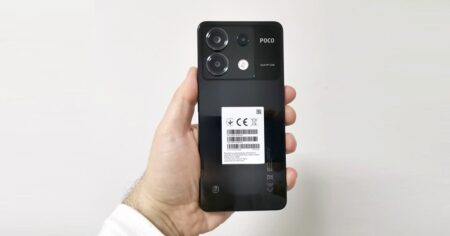Poco F6 Pro Design
- Design and Build Quality.
- Does it feel cheap?
- IP54, dust and splash resistant.







Design and Build Quality
The handset truly shines in terms of design and weight, with an incredibly slim 8.21 mm profile and sleek bezels that capture the eye. You can find the F3 Pro in two main color variants, black and white. For those concerned about the body materials, you’ll be pleased to hear that Xiaomi didn’t make serious compromises on quality nor materials, but there is one worth mentioning.
The handset’s frame is made of aluminum or titanium alloy material, with a front shielded by strong tempered glass. Xiaomi might opt out of using the well-known Gorilla Glass for this handset. A durable case and a tempered screen protector are recommended for users to ensure adequate protection for the display.
How does it compare to the standard F6 variant?
It likely does not have a metal frame, which makes it more susceptible to damage when dropped. However, there is a solution. We recommend using a robust case equipped with shock-absorbing bumpers.
Plastic or metal frames? Which is better?
The choice of a frame material greatly impacts the appearance, strength, and functionality of smartphones. Metal frames give a premium and durable feel, while plastic frames offer a lightweight and cost-effective option. Knowing the advantages of each material is crucial for designing smartphones that meet diverse consumer preferences and usage needs.
Heat dissipation capabilities
In addition to the luxurious feel they impart, metal frames offer exceptional heat dissipation capabilities, surpassing those of plastic frames. Metals are highly effective at conducting and dispersing heat, rendering them the perfect option for smartphones housing powerful processors and subjected to heavy usage.
This benefit is particularly advantageous for gaming enthusiasts and individuals who use their smartphones for demanding activities. The metal frame plays a crucial role in maintaining optimal operating temperatures, reducing the likelihood of thermal throttling and performance degradation. Ultimately, this ensures consistent performance and a smooth user experience.
Structural toughness
Smartphones with metal frames demonstrate superior structural resilience and resistance to physical damage in comparison to their plastic counterparts. The inherent strength and rigidity of metal renders the device less prone to bending, dents, and structural deformities, thus providing heightened protection against accidental drops and impacts. This durability contributes to an extended lifespan for the smartphone, minimizing the probability of frame-related damage and guaranteeing the device’s structural integrity over time.
Smartphones with plastic frames are lighter and cheaper than metal frames, providing a more comfortable user experience, which is especially appealing for those who prioritize portability and handheld comfort.
The cost of production is lower.
Plastic frames help reduce smartphone production costs, making devices more affordable for budget-conscious consumers. This makes them a popular choice for those seeking reliable devices at a lower cost.
Enhanced wireless signal transmission
Plastic frames do not interfere with wireless signals, improving antenna performance and signal reception to ensure reliable connectivity and call quality, particularly in challenging network environments.
Weighting the Poco F6 Pro
Considering the fact that the phone comes with a metal frame which adds a few grams to the total weight. In the realm of mid-level smartphones, the F6 Pro reigns as one of the most lightweight flagship choices on the market, weighing a mere 211g (SIM Card included).

The rear side of the phone
The back cover of the handset isn’t glossy and isn’t reflective to light, which is a good strong point of this device in terms of holding the device, and most importantly, it doesn’t leave fingerprint smudging which can be somewhere annoying. Furthermore, the design of the rear camera is now sleeker and thinner, offering a more elegant aesthetic design.
The front side of the phone
The Handset has a high-quality 6.67-inch AMOLED display with minimal bezels for an immersive viewing experience. It also features a discreetly positioned selfie camera and integrated fingerprint sensor for sleek design and maximum functionality.
How does it compare to the Poco F6 variant?
The F6 Pro comes with Corning Gorilla Glass 5 display protection, whereas the standard F6 variant is equipped with the latest and more advanced Corning Gorilla Glass Victus. This represents a significant improvement from previous versions, ensuring superior durability against drops and scratches compared to the previous generation’s Gorilla Glass 5 protection.
Is the external design good?
The external appearance of the F6 Pro is impressive and quite sleek. Its lightweight design makes it convenient to carry around. The overall feel and materials are sturdy and well-crafted for a flagship level device. From what we’ve observed, there are no compromises made in build quality, making it a compelling choice for users seeking a stylish and durable device.
Protection against water and dust?
Poco F6 Pro
Although Xiaomi didn’t explicitly mention this parameter in their specs, it is highly probable that it has an IP54 rating, which provides a fundamental level of safeguarding against solid particles like dust, as well as protection against water ingress.
Poco F6
Based on Xiaomi’s specifications, the F6 variant is IP64 rated. The device’s rating indicates the extent of protection it provides against solid particles and water.
- “IP” refers to “Ingress Protection” and represents a standard rating that indicates the degree of protection a device offers against dust and water.
- 6: The initial number signifies the degree of shielding against solid substances. IP64 indicates that the enclosure is completely shielded from dust intrusion. In other words, it effectively seals off any possibility of dust particles entering the enclosure.
- 4: The second digit in the IP rating system indicates the degree of protection against water. The digit ranges from 0 to 9, with higher numbers indicating higher resistance to water. This rating is important for electronic devices used in wet or outdoor environments. Devices with a higher IP rating can withstand more water and dust exposure. The IP64 rating signifies that the enclosure is “protected from water spray from any direction,” ensuring that it can resist water splashes or sprays without ingress.
Consider buying extra accessories for device protection? Here are some helpful tips!
1. Buying camera lens protector
Taking precautionary measures to protect the lens of your device from scratches, dust, and water splashes is a wise decision. Doing so will help preserve the quality of your photos and extend the longevity of your device.
2. Buying a sturdy case.
Ensure the safety of your device from water and dust by using a dependable protective case. It’s crucial to be extra careful around water, such as at the pool or beach, as sprays can damage its performance.




